On 30th January 2016, A 6 year old male child. S.P., was brought to our Homeopathic Centre. On that day, around thirty doctors of our E-learning group were present and watching on simultaneous video when this case was taken live. On 13th December 2015, this child for the first time had a generalized fit, at around 12 noon. There was no accompanying fever. On the same day there were generalized fits at 2:30 pm, 5:30 pm, 7 pm, and then at 7:30 pm. After 7:30 pm there were two more epileptic fits in succession within a gap of 2 to 3 minutes. The parents then immediately rushed him to a hospital where he was admitted for four days and started on conventional antiepileptics. In the hospital, CSF (CerebroSpinal Fluid) analysis was in normal limits and an MRI of the brain (with epilepsy protocol) was also normal. On 21st December 2015, in spite of the continuation of anti-epileptics, the EEG (Electro Encephalogram) showed generalised seizure during waking hours. (report attached below). When the child came to us, he was taking Encorate Chrono 200 in the morning , Encorate Chrono 300 in the night, and Frisium 5 once a day.
On enquiring about the modalities of the fits, the following details were found –
- After 13th December 2015, there has been no fit, as the child is on anticonvulsants.
- During the epileptic fits on 13th Dec, he would throw his head backward and his eyes were turned upwards.
- One week before the epileptic fit on 6th December 2015, the boy was playing in a mall when he hit his head against a glass door. After this incident the parents observed that the child had become dull and there was a loss of his appetite. The child also lost his usual interest in studying and completing his homework. These symptoms lasted for one week and then on 13th December he suffered with fits!
Other presenting complaints :-
- Nocturnal Enuresis (2+) since the fits have started
- Pain in legs < night (2+) > by pressure
Homeopathic Symptoms –
- The child is very restless (3+)
- Severe Grinding of teeth during sleep (3+) since 2-3 years of age
- Fear of dark (3+) . Fear of being alone (2+). These two fears existed long before the onset of fits. From fear, does not close the door of the toilet.
- Jealousy (3+). Does not let his father go close to his mother. If the mother is being affectionate to some other child or even a puppy, he gets very angry. This Jealousy also existed long before the fits.
- Timidity outside the house but bossy attitude with the family. After starting the anticonvulsants the child has become more aggressive with the parents (2+) but does not fight with children outside.
- Talking in Sleep (1+) ; Laughing in Sleep (1+)
- Sleeps on Abdomen (2+)
- Desires – lemon (2+) , raw capsicum (1+), tomato (1+), milk (1+)
- Had Desire for sweets (2+) , before the fits began , but not now.
- Hot (2+) child. Heat <
- Salivation during sleep (3+)
- Stool offensive (2+), Flatus (2+)
- Has perspiration on side lain on (2+)
- Appetite has increased (2+) after starting the anticonvulsants.
ANALYSIS – It is evident, that the head injury definitely had an effect on the child. The child used to grind his teeth during sleep, which went on a long time. This suggests an irritation of the meninges and shows a predisposition for brain affections. The head injury acted as a stress and this predisposition surfaced in the form of convulsions.
Considering remedies after a head injury, there are two possibilities regarding this child –
- If after the injury, new symptoms have appeared which clearly point to a remedy, it means that post injury a new layer of remedy has been engrafted and thus this remedy will definitely help the child’s fits.
- If after the injury, new symptoms do not point clearly to a remedy, then for prescribing, we would consider the homeopathic symptoms that existed before the injury. This thinking assumes that the child needs the same remedy before and after the injury. The basis of this assumption is that the symptoms after the injury do not point to a clear remedy.
DIFFERENTIAL DIAGNOSIS –
- Stramonium – Fear of dark, Fear of being alone, Grinding of teeth and Convulsions point to a possibility of Stramonium. But the child would not fight with children outside, though he was aggressive in the house. A Stramonium child will be violent and aggressive everywhere. Also the child had no nightmares.
- Hyoscyamus – Jealousy, Grinding teeth, Restlessness and Convulsions point to a possibility of Hyoscyamus. But on enquiry there was no evidence of any shameless behaviour, nor of Handling Genitalia. Also a Hyoscyamus child has an aversion to tomatoes, but our patient had desire for tomatoes.
- Tuberculinum – Grinding teeth, Restless , Sleeping on abdomen and Convulsions point to a possibility of Tuberculinum. But no Family History of Tuberculosis could be ascertained. The child desired milk only in 1+, and for Tub it should be more strong. The child had no Fear of Dogs.
- Belladonna – Grinding teeth, Restless , Sleeping on abdomen, desire lemon and convulsions point to a possibility of Belladonna. But the child had strong fear of dark and not of animals. For Belladonna, talking in sleep should be 3+ and not 1+.
- Cina – Grinding and Convulsions point to a possibility of Cina, but there were no worms or associated symptoms.
- Lycopodium – His essence of being timid outside & bossy and aggressive in the house together with his increased appetite, fears and passing flatus points towards a possibility of Lycopodium. But for Lycopodium, desire sweets should be in (3+) which in our patient was only in (2+),and which has further reduced to (1+) after the injury!!
So it was difficult to finalize a chronic remedy.
There was a possibility to prescribe Arnica, Natrum Sulphuricum or Cicuta on the basis of causation of head injury, but no Key Notes of these remedies could be found. The problem in this case was that the intake of anticonvulsants has altered the symptomatology that had appeared after the injury. We had symptomatology only for one day , and then the anticonvulsants were started. If we now reflect just on the symptomatology of that one day, the following were the peculiarities –
- Convulsions after head injury
- Many fits in 1 day
- Convulsions of children
- Eyes turned upwards
The above symptoms caused me to recall a small remedy – Artemisia Vulgaris , which is given in (3+) in Convulsions in children and which covers all the above mentioned peculiarities also. Dr N.M Choudhari writes in his material medica “Artemisia is specially indicated in epilepsy after a fright or grief or a blow on the head. The attacks are frequently repeated to be followed by a long interval of rest…. In Artemisia we have several attacks of epilepsy in the same day.”
PRESCRIPTION – Since the child was taking anticonvulsants, we had to repeat our remedy. So the prescription was Artemisia Vulgaris 30, three times a day, to be increased by one potency every 10 days. The parents were advised that if there would be general improvement in the child, then we will start tapering down the conventional anticonvulsant medicines, to which they agreed.
FIRST FOLLOW UP on 27th FEBRUARY 2016
On 22nd February, an EEG was done which showed a normal study, in contrast to the EEG of 21st December 2015, which was abnormal (Report attached below)
Restlessness in the child 30 % >. Aggression and Disobedience of the child is also >. Grinding of teeth during sleep is completely absent now ! Fear of dark is >. Fear of alone is > . Now he closes the door of the toilet. Nocturnal Enuresis has completely stopped. Salivation during sleep has decreased. Parents have observed that the child is less jealous than before.
ANALYSIS – It was very surprising for me, that the symptoms (like Jealousy, Grinding teeth, Fears) that were present in the child even before the head injury, have ameliorated after Artemisia Vulgaris. This meant that Artemisia has very deeply affected this child. From this case we will be able to decipher the chronic picture of this remedy.
PRESCRIPTION – Since many deep symptoms had changed, I decided to stop repeating Artemisia Vulgaris and instead gave Sac-lac. The parents were also advised to continue tapering down the anticonvulsants.
SECOND FOLLOW UP on 11th APRIL 2016
Now the child is taking only 100 Encorate Chrono and that too only once a day.
Restlessness is further better (50-60% >). Grinding of teeth during sleep completely absent. Fear of dark is much improved. Jealousy is far better than before. He initially would separate father from mother or would hit mother on seeing her loving some other child. But now if sees that father and mother are sitting close together, he goes and hugs both of them. There is no pain in the legs at night. Aggression is also much better. The child still desires lemon (2+). Talking in sleep is absent now.
PRESCRIPTION – Sac-lac and continue tapering down the anticonvulsants.
THIRD FOLLOW UP on 13TH MAY 2016 (3.5 months after 1st Consultation)
Anticonvulsants were completely stopped on 24th April 2016. The child has had no fit to this day. Improvement in his behaviour still continues. The fear of dark and fear of being alone are much better. Closes the toilet door. Still no grinding of teeth during sleep. The desire for lemon has increased lately (3+). The child still sleeps on his abdomen.
FOURTH FOLLOW UP on 15TH JUNE 2016 (4.5 months after 1st Consultation)
No fit till now. No Grinding of teeth during sleep. Aggression and Disobedience in behaviour much better than before. Jealousy still better. Fears are better. Salivation during sleep is much reduced. No Nocturnal Enuresis. Since 3 days, again talking in sleep. Still desires lemon and still sleeps on abdomen. Very good in studies.
EVALUATION – Artemisia is mentioned in italics in the rubrics, Mind – Restlessness, and Teeth – Grinding. This case thus confirms the presence of Art-v in these rubrics. We can add Art-v in grinding during sleep, after confirming from future cases. Jealousy also appears to be a strong element of Art-v, which should be confirmed again from future cases. Also fear of dark and fear of being alone reduced drastically in this case. Hence they should also be noted down as strong keynotes of Art-v, which have to be confirmed from other cases. Salivation during sleep also reduced a lot after Artemisia, for which again a note should be made for future confirmations. If these symptoms are again found in patients helped by Artemisia, then they should definitely be added to the Repertory. We have noted down these symptoms as a part of a clinical proving for Artemisia but Prof. George Vithoulkas advises that such symptoms should be reconfirmed again by homeopaths at least two to three times before finally recording them in the repertory.
If all symptoms present before and after the head injury are considered for Repertorization: When we do this, we assume that the child needed the same remedy before and after the injury. If this would be correct, then we can be sure that our remedy will go deep and will work like a constitutional prescription. But in our patient, we could not confirm any of these remedies completely
If only the symptoms after the head injury are considered for Repertorization : Here we assume that our remedy will act superficially, only for the engrafted layer, and then it would be necessary on our part to find the deep remedy, so that the child really gets a jump in his health.
In this case Artemisia Vulgaris cured all the symptoms that were present before as well as after the head injury. So it was a deep remedy for the child and we are now therefore sure that it would not only remove the convulsions but will also take care of the predisposition for convulsions, which existed in the child much before the injury.

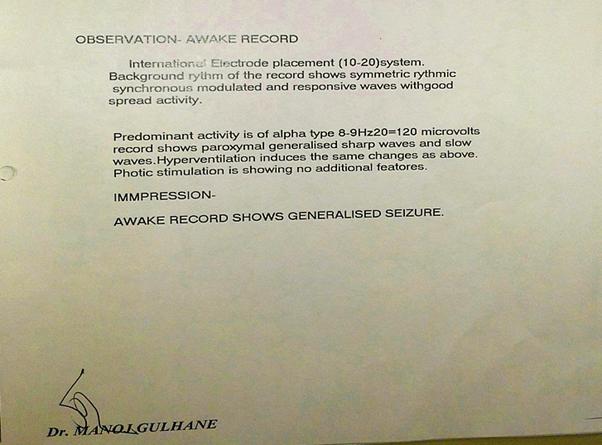
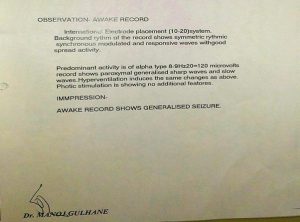
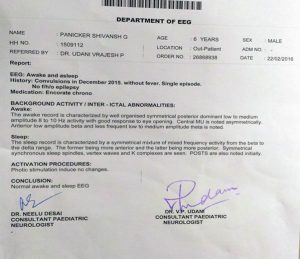

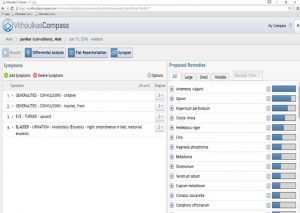
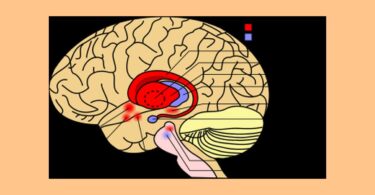
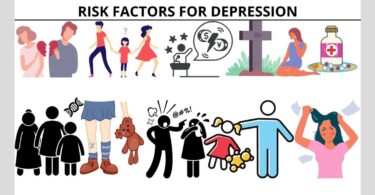

Very nice case with depth of understanding about differential medicines and selection of the medicine.
Such a clear explanation of remedies is not always found to read. Is really a very good treatment of a complicated case.
good case, there is a lot to learn. Prompt – how you increase the potency every 10 days? gave 31,32,33 .. or something else?
and the last two advice you give a drug or a placebo once again?
I recall that in the 6 edition of the Organon Hahnemann in paragraph 246 teaches that repeated reception of the same medicine have to do an aqueous solution and shake it before each new reception, if necessary. Why not use it?
Good point.
Applause-applause!!!!!
Beautiful case description !! So clear explanation of basic concepts.
A good learning case with beautiful explanation of remedies and excellent application of theory.
Really excellent and learning experience